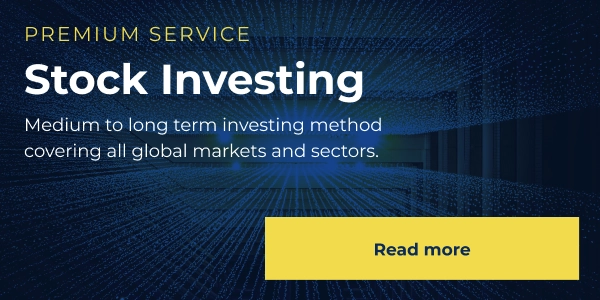Which trends will dominate markets 2023? Which will be the leading 2023 market trends is a question that keeps investors awake at night, for sure. The red line through our forecasts is that stocks will have a good year and the US Dollar will (finally) retrace. We used quite a lot of charts to make that point, they are all well documented in leading 2023 forecasts like our silver forecast, no market crash analysis, DJIA 20 year and Dow 100 year charts. We are still very bullish on green battery metals as documented in our bullish lithium outlook and graphite outlook. Analysts and investors tend to be hungry for data: the more data the better. From time to time, it is crucial to take a step back and simplify things: less is more. That’s what we do in this article: we combine 3 leading market indicators in 1 chart, it tells a story about what to expect in 2023.
If anything, we do know from history that every year in markets is different, very different. That’s why the 2023 market trends will be very different than the ones of prior years.
2022 was very unusual. We documented some of this in ‘Celebrating’ 2 Years Of Historical Anomalies In Markets and also in 2008 vs. 2022: Similarities and Differences.
CNBC also wrote about it in this piece: the worst first half of the year in 50 years.
Forecasting 2023 market trends
It is not easy to forecast trends 6 to 12 months prior to happening.
However, we want to take that challenge, we are doing so every year and our hit rate is good enough to continue to do this.
Let’s start with the market trends in 2022:
- Stocks are consolidating for 6 months after having a really bearish April/June quarter.
- Bonds came down along with stocks, something that never happened before, certainly not to the extent both declined.
- The USD was rising in a relentless way until October, for more than a year.
- Momentum stocks got hit, hard.
- Tech stocks got hit, hard.
- Value stocks were split: some did well, some did not.
Can we predict what the 2023 market trends could be based on the ‘base line’ which is the high level inventory outlined above?
We believe the above mentioned trends did run their course and are in the process of reverting.
2023 market trends: leading indicators in one chart
Let’s look at one chart which visualizes the leading indicators of the market.
The Russell 2000, leading indicator for stocks, is setting a double bottom. It is blatantly clear from this chart that stock indexes will not move lower, they will be flat (worst case) or higher (base case).
10 year Treasuries are also clearly going through a bottoming process. Stocks fell in 2022 along with Treasuries (rising rates). This happened as the USD was rising on tightening monetary policy.
Well, in the lowest part of below chart we see a clearly topping USD.
These markets feel bad (yes, sentiment is horrible). However, taking a step back and looking at 3 leading indicators (chart above) paints a very different picture.
The market felt bad in 2022 because of the persistent high levels of volatility. This might be in the process of changing, we have to adjust to the new situation and not stick to feelings from the past.
As explained in 7 Secrets of Successful Investing
The problem with all these emotions is that they are so human that many of us are unaware of them. They ‘are’ just there. We never learnt in life to work with them as an input which means that you recognize them but that you don’t let them influence you. You use them as an input when you are aware of them and when you are able to think of them similar to any other input (information first and foremost).
Bi-furcated markets in 2023
We expect bi-furcation to dominate markets in 2023:
- Some sectors will do very well, many will be lagging.
- Laggards will be future leaders and vice versa.
- Only a very few long term growth trends are here to stay, one of them is green battery metals.
- Trends might change fast, a minority will be lasting trends.
We also do expect at least one unexpected trend to occur in 2023. We are not sure whether it will be a quick and sudden rise in silver or nickel, maybe a quick rise in a few EV stocks, or a breakout in a region like Latin America.
Who knows, maybe a mass adoption will start in a very specific domain in crypto. As per our crypto forecast, it might be Web3 that finds a mass use case.
We will continue to monitor global markets, no matter how challenging markets will be.
As far as monetary policy is concerned, it remains concerning how hawkish Fed representatives continue to be. As if they have joy in creating fear. While their concern of out-of-hand inflation is valid it is true that month-on-month inflation is well below their 2% target. As of March of 2023, year-on-year inflation will become very low simply because the rate of inflation started picking up very fast.
We do acknowledge that the Fed’s decisions might invalidate all of our forecasts. They can go too far with their monetary policy decisions and create a ‘hard landing’. The market is currently on track for a ‘soft landing’ (which might already be in, at the time of writing).





